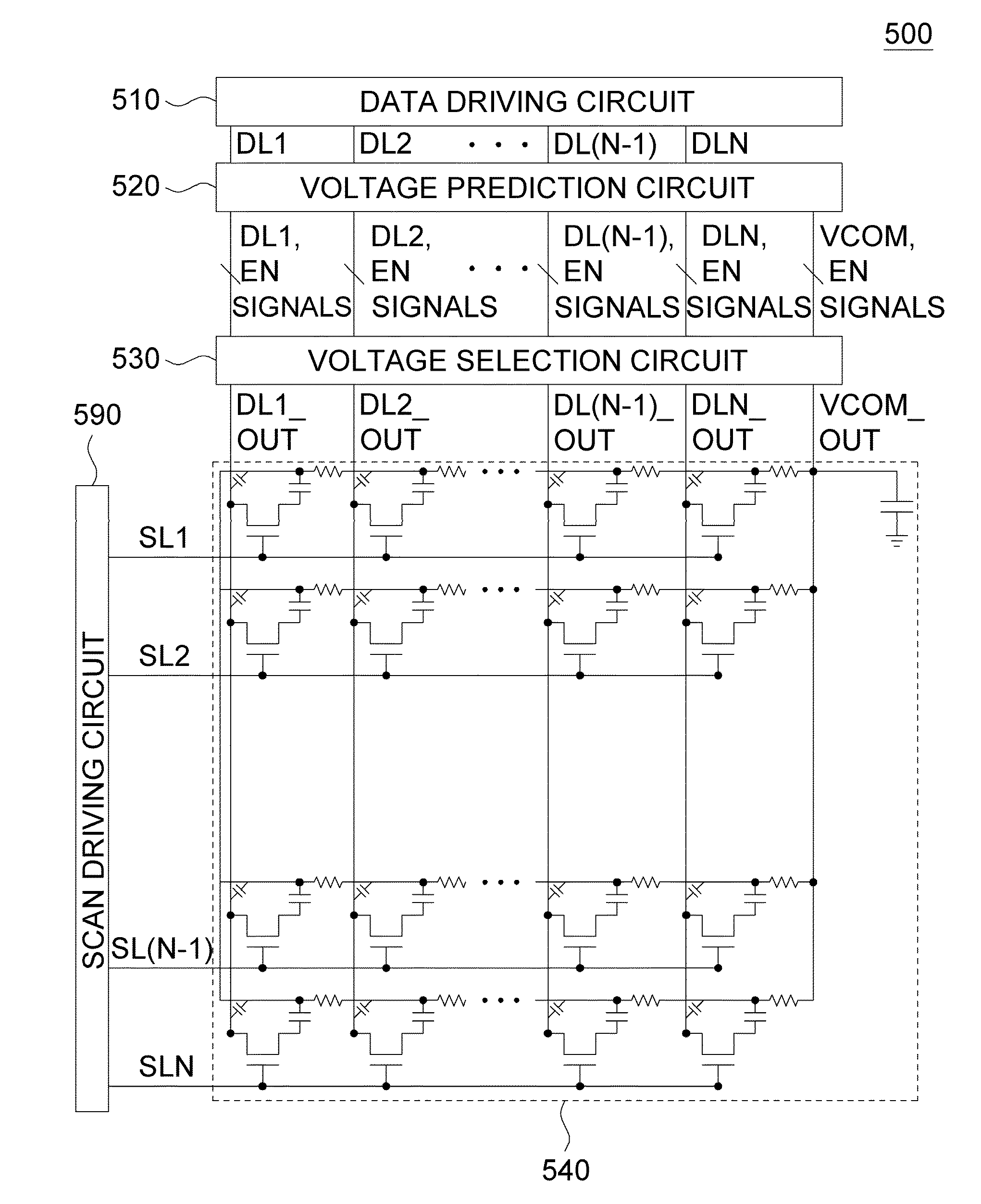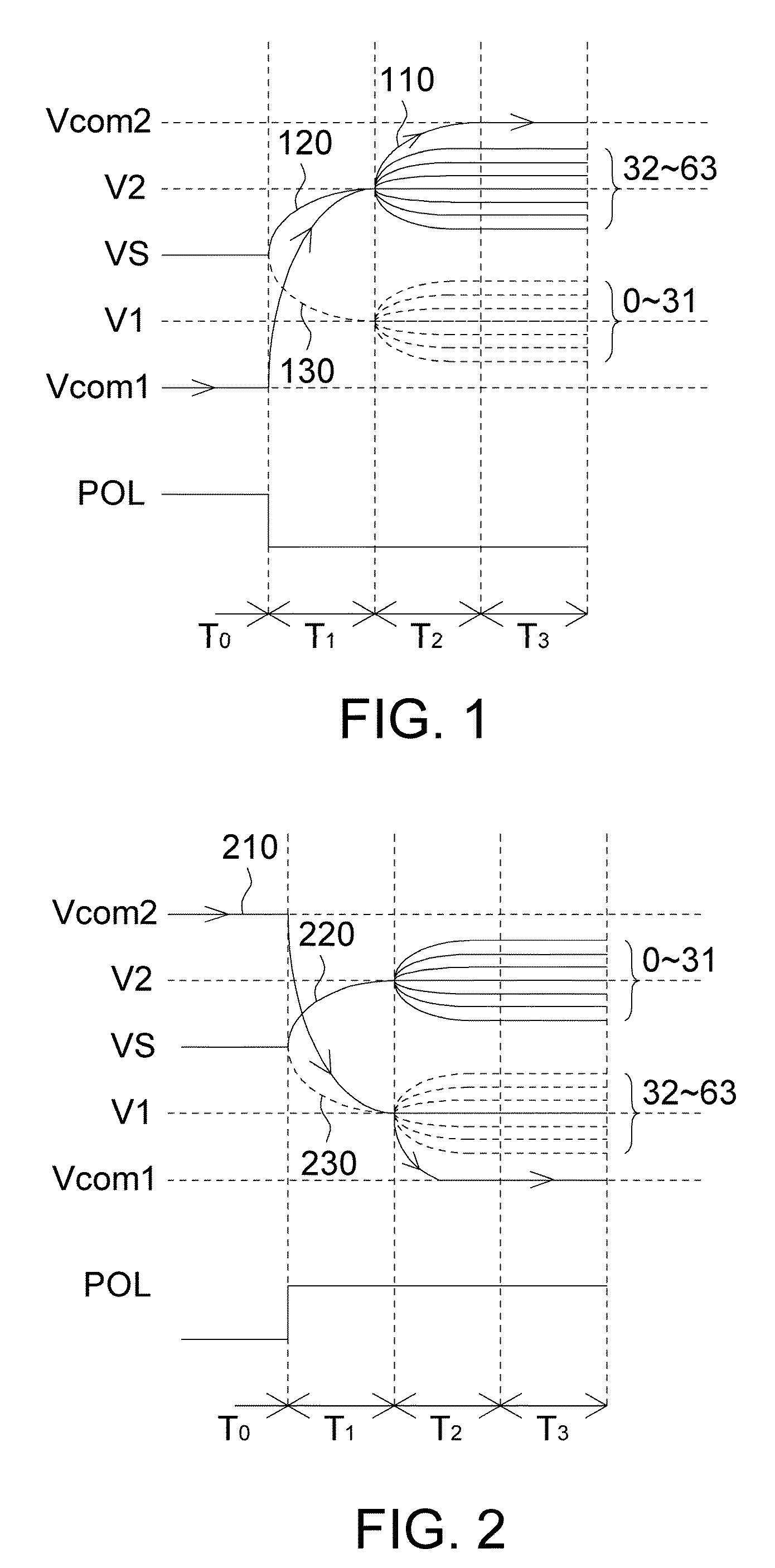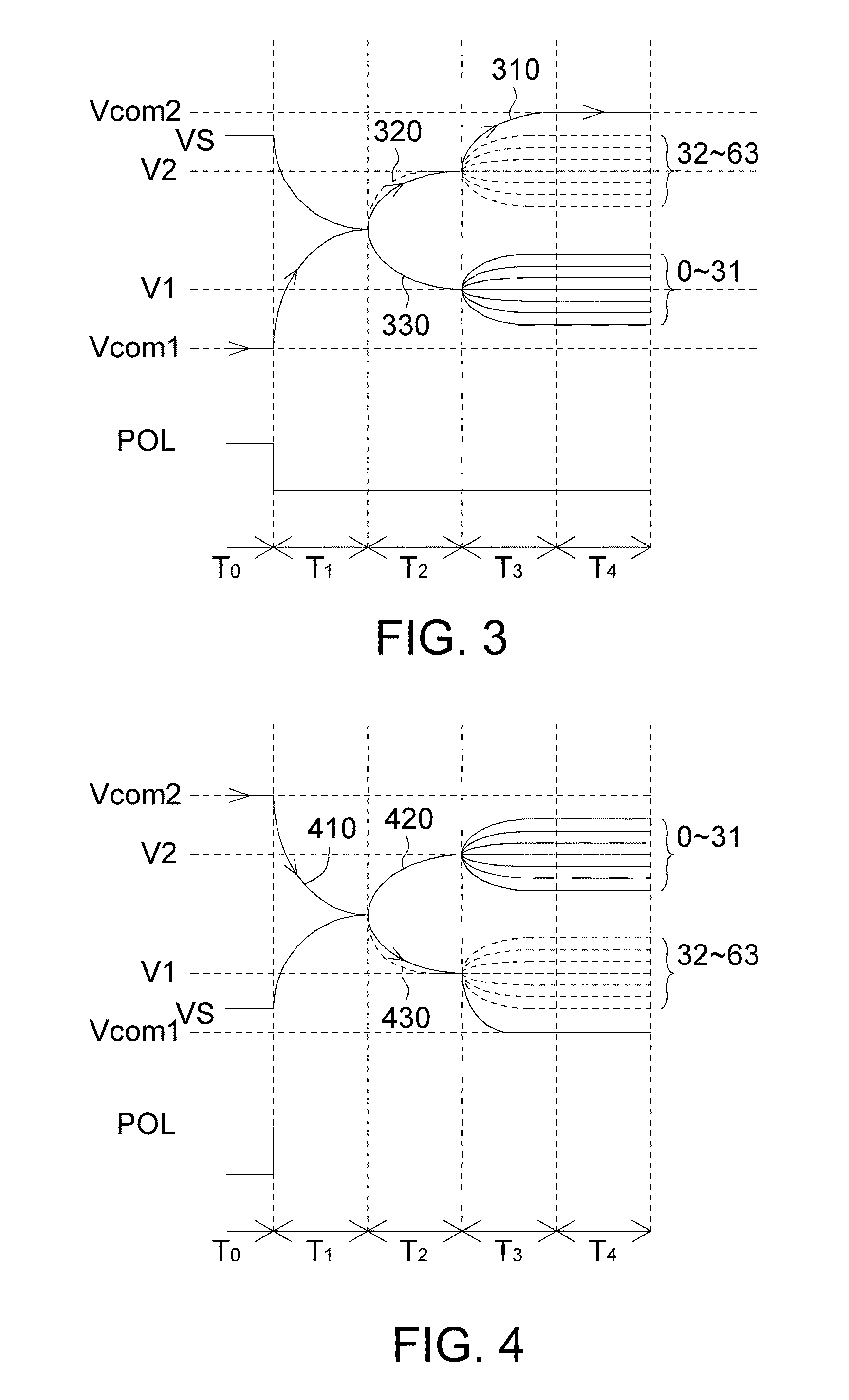Low Power Driving Method for a Display Panel and Driving Circuit Therefor
a technology of low power driving and display panel, which is applied in the direction of electric digital data processing, instruments, computing, etc., can solve the problems of degrading performance, increasing power consumption and transition time, and reducing so as to achieve power saving and efficient reduction of the voltage range of the data lin
- Summary
- Abstract
- Description
- Claims
- Application Information
AI Technical Summary
Benefits of technology
Problems solved by technology
Method used
Image
Examples
first embodiment
[0019]According to a driving method of the first embodiment of the invention, the voltage of a corresponding pixel electrode of a pixel is driven when the voltage of the corresponding common electrode of the pixel in a pixel array is changing from one of a first common voltage (Vcom1) and a second common voltage (Vcom2) to the other thereof according to a polarity signal. The driving step includes at least two sub-steps:
[0020](a) Within a time interval, the voltage of the pixel electrode of the pixel is changed to one of a plurality of voltage levels, such as one of a first voltage (V1) and a second voltage (V2), selectively according to a data code for the pixel and the polarity signal, so that the voltage of the pixel electrode becomes closer to a corresponding target voltage of the data code. (b) After the time interval, the data line, whose voltage has been changed, is enabled to receive a target voltage so as to generate a desired voltage difference between the data line and th...
second embodiment
[0025]The sub-step (a) of the first embodiment makes the voltage of the pixel electrode closer to the corresponding target voltage of the data code. Based on the first embodiment, the sub-step (a) of the second embodiment appropriately changes the voltage of the pixel electrode to be closer to the corresponding target voltage of the data code through pre-charging method and the determination result in the prediction of the trend of the target voltage.
[0026]FIGS. 1 and 2 respectively show a schematic diagram of a driving method according to the second embodiment of the invention. In FIG. 1, when the polarity signal POL indicates that the common voltage is changed from positive polarity to negative polarity, as indicated by an upward curve 110 with an arrow, the common voltage is changing from a first common voltage Vcom1 to a second common voltage Vcom2, the voltage of the pixel electrode VS of a pixel is driven. In FIG. 2, when the polarity signal POL indicates that the common volta...
third embodiment
[0038]Referring to FIGS. 3 and 4, a schematic diagram of a driving method according to the third embodiment of the invention is respectively shown. The driving method of the third embodiment can be based on any of the above embodiments. Besides, the step of driving the voltage of a corresponding pixel electrode of a pixel further includes: within a time interval (e.g., the time interval T1 of FIG. 3 or 4), connecting the common electrode and the pixel electrode of a pixel, or making the two electrodes short-circuited, so that the voltages of the two electrodes achieve a balance voltage. Afterwards, the step of making the voltage of the pixel electrode even closer to the corresponding target voltage of the data code is performed. In this manner, better performance in power saving and reduction in transition time can be achieved since the connecting method leads to charge redistribution by way of charge sharing.
[0039]The step of making the voltage of the pixel electrode even closer to...
PUM
 Login to View More
Login to View More Abstract
Description
Claims
Application Information
 Login to View More
Login to View More - R&D
- Intellectual Property
- Life Sciences
- Materials
- Tech Scout
- Unparalleled Data Quality
- Higher Quality Content
- 60% Fewer Hallucinations
Browse by: Latest US Patents, China's latest patents, Technical Efficacy Thesaurus, Application Domain, Technology Topic, Popular Technical Reports.
© 2025 PatSnap. All rights reserved.Legal|Privacy policy|Modern Slavery Act Transparency Statement|Sitemap|About US| Contact US: help@patsnap.com



